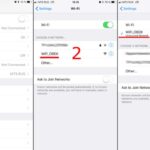The P0327 code is a common OBD-II trouble code that signals “Knock Sensor 1 Circuit Low Input (Bank 1 or Single Sensor).” If you’ve encountered this error, it’s crucial to understand what it means and how to address it to ensure your vehicle’s optimal performance and longevity. As an auto repair expert at autelfrance.com, I’m here to guide you through the intricacies of this diagnostic trouble code.
Decoding the P0327 Code: Technical Explanation
P0327 is a generic powertrain code, meaning it’s applicable across a wide range of OBD-II equipped vehicles. This code indicates that the Engine Control Module (ECM) or Powertrain Control Module (PCM) has detected an abnormally low voltage signal from the knock sensor circuit for sensor 1, which is typically located on Bank 1 of the engine or on engines with a single knock sensor.
A knock sensor is a vital component that listens to engine noises, specifically detecting engine knocking or detonation. Knocking occurs when the air/fuel mixture in the cylinders ignites unevenly, leading to less efficient combustion, power loss, and potential engine damage over time. The ECM uses the knock sensor’s input to adjust ignition timing and air-fuel ratio, preventing knock and maintaining engine health.
When the ECM registers a low voltage from the knock sensor circuit – below a certain threshold, often around 0.5V – it interprets this as a malfunction and sets the P0327 DTC. This issue can be intermittent or persistent, and it may illuminate the “Service Engine Soon” light on your dashboard. It’s important to note that P0327 is part of a family of knock sensor related DTCs, including P0325, P0326, P0328, P0329, P0330, P0331, P0332, P0333, and P0334, each indicating a slightly different knock sensor circuit issue.
Recognizing the Symptoms of a P0327 Error
When the P0327 code is triggered, you might experience several drivability issues, including:
- Fluctuating Engine RPM: The engine speed might become unstable, idling roughly or surging unexpectedly.
- Loss of Engine Power: The vehicle may feel sluggish, especially during acceleration, due to the engine’s inability to operate at its peak efficiency.
- Hesitation: You might notice the engine hesitating or stumbling when you press the accelerator pedal.
- Reduced Fuel Economy: Inefficient combustion due to knock can lead to increased fuel consumption.
- Possible Engine Noise: While the knock sensor issue might prevent severe knocking by design, you may still hear unusual engine noises, particularly under load.
Pinpointing the Potential Causes of P0327
Several factors can contribute to a P0327 code. Here are the most common culprits:
- Faulty Knock Sensor: The knock sensor itself might be defective. Over time, these sensors can fail due to heat, vibration, or physical damage.
- Wiring Issues in the Knock Sensor Circuit: This is a frequent cause. Problems can include:
- Short Circuit: The wiring might be shorted to ground, leading to a low voltage signal.
- Open Circuit: A break in the wiring can disrupt the signal flow.
- Damaged or Frayed Wires: Physical damage to the wires can cause signal degradation or loss.
- Corroded Connectors: Corrosion at the sensor or ECM connectors can increase resistance and reduce signal voltage.
- PCM/ECM Failure: Although less common, a faulty Powertrain Control Module (PCM) or Engine Control Module (ECM) can misinterpret sensor signals or cause erroneous readings.
Step-by-Step Solutions for Resolving P0327
Addressing a P0327 code requires a systematic approach to diagnosis and repair. Here’s a step-by-step guide:
- Verify Knock Sensor Resistance: Use a multimeter to measure the resistance of the knock sensor. Compare this reading to the manufacturer’s specifications. A significant deviation indicates a faulty sensor.
- Inspect Wiring and Connectors: Carefully examine the wiring harness and connectors associated with the knock sensor circuit. Look for:
- Visible Damage: Check for cuts, frays, or melted insulation on the wires.
- Loose or Corroded Connectors: Ensure the connectors are securely attached and free from corrosion. Clean any corroded terminals with electrical contact cleaner.
- Check Circuit Voltage and Ground: With a multimeter, verify that the knock sensor is receiving the correct reference voltage (typically 5 volts) from the PCM/ECM. Also, confirm proper ground continuity for the sensor circuit.
- Perform a Wiring Continuity Test: Use a multimeter to check for continuity in the wiring between the knock sensor and the PCM/ECM. This will help identify any open or short circuits in the wiring.
- Sensor Replacement: If the sensor resistance is out of spec or if wiring and voltage checks are inconclusive, replacing the knock sensor is often the next step. Ensure you use a quality replacement sensor that matches your vehicle’s specifications.
- PCM/ECM Diagnosis (Advanced): If all other components check out, and the P0327 code persists, a PCM/ECM issue might be suspected. This usually requires advanced diagnostic tools and expertise, and it’s often best left to a professional technician.
Important Note: Always consult your vehicle’s repair manual for specific procedures, wiring diagrams, and component locations related to the knock sensor and P0327 code.
Need Further Assistance with P0327?
Troubleshooting OBD-II codes like P0327 can sometimes be complex. If you require more personalized guidance or want to discuss your specific situation, I encourage you to visit our car repair forums at autelfrance.com. Our community of experts and enthusiasts is ready to assist you with your car repair questions.
Disclaimer: This information is for informational purposes only and should not be considered professional repair advice. Always prioritize safety and consult qualified technicians for vehicle repairs. We are not liable for any actions taken based on this information.
Register now to ask a question (free)
Share

